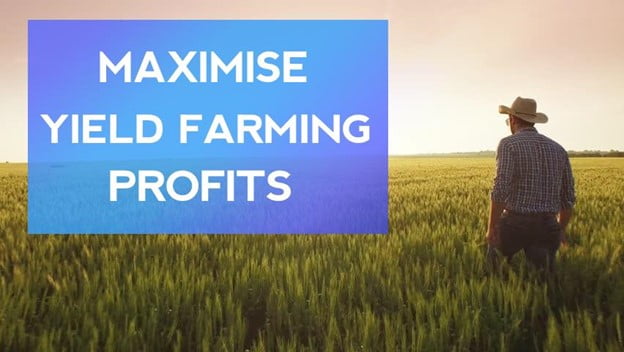After 3 months of what can only be described as a DeFi mania in the $7.61 billion worth sector, the market finally came to a halt in September and is now recovering. The situation however is not grim at all as further market growth requires exactly what already happened, a healthy correction. Farmers can now prepare for the next cycle of yield farming and in this article, we will show you how to maximise your profits.
Yield farming is no easy task. It requires constant research, liquidity pool search, and even a bit of luck. Maximising your LP rewards requires you to dedicate even more of your time. Time is money and to help you save it we gathered all tips that an expert farmer should know.
For some, even grasping the basic concepts of yield farming and how it works can be difficult. However, we assure you that once you have mastered the fundamentals, nothing is stopping you from turning from an amateur into a pro. During the DeFi craze, the euphoric market movement lasted long enough for some investors to turn yield farming into a full-time income. All it takes to achieve that is knowledge, experience, and motivation to succeed.
In September 2020, developers keep launching new projects in hopes of becoming the next Uniswap, Aave, or Maker. With the inflow of developers, there is likewise similar demand from farmers who rush to be the first ones to farm on a project and earn more money than latecomers. With that in mind, let us start by familiarizing ourselves with reducing the ever-growing ETH gas fees.
Minimize ETH gas fees
Gas fees have the highest impact on your yield farming profit compared to any other feature. Exorbitant ETH fees prevent farmers with smaller portfolios from participating while at the same time rewarding whales. Most times, fees only cost a fraction of your transaction at $10 on average. However, the situation radically changes when network activity reaches sky-high records. That time is exactly the moment when farmers make the most money.
Two weeks into September, gas prices range at 77 gwei according to EthStats. Only one week earlier when the DeFi market reached a new record, those same fees averaged at around 450 gwei. Dollar-wise, the average liquidity provider spent $40 for swapping tokens and even more for providing liquidity. Therefore, you must minimize the gas you spend on transactions.
Essentially, most yield farming protocols provide fixed gas fees that do not change depending on the value of your transactions. As we mentioned, this mechanism rewards whales and prevents smaller farmers from participating.
Data from EtherScan
On that account,
